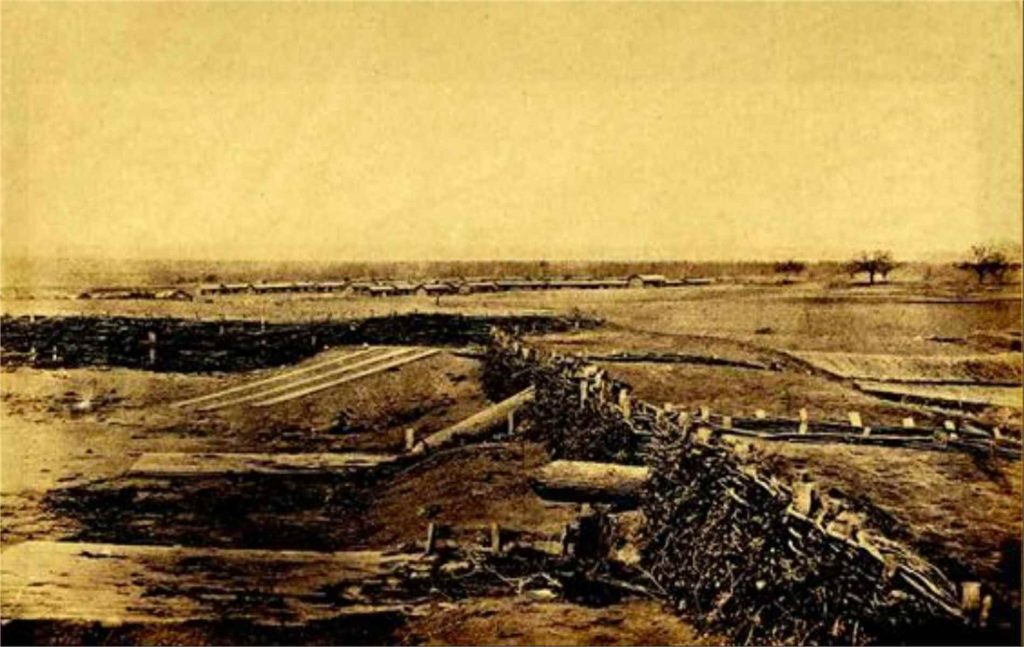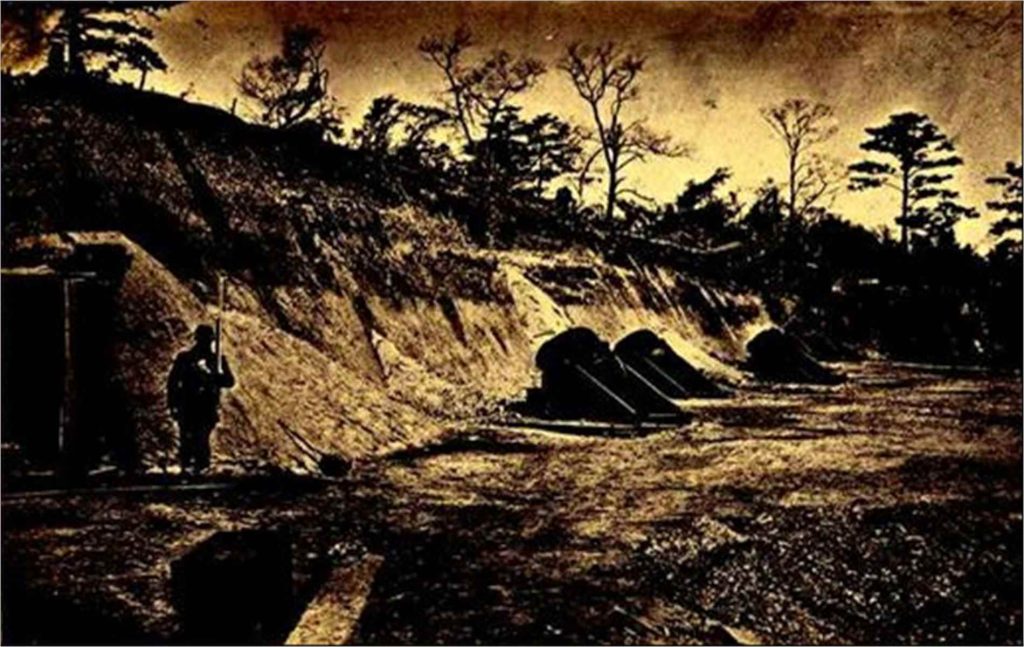Episode 57 – The Civil War starts and Texans Start Killing Each Other
Welcome to Episode 57 – The Civil War starts and Texans Start Killing Each Other
Podcast: Play in new window | Download | Embed
In the previous episode I talked about the path to secession. How Texas called a convention to consider the issue and how, even though some resisted the whole idea, it still went through. In fact, President Lincoln did tell then Governor Sam Houston that if he wanted to resist the convention, then Lincoln would be willing to send in Federal troops. However, Houston rejected that idea because he did not want to turn what was already a tense situation into an outright violent conflict among Texas citizens.

Remember that during the convention, the Civil War Committees of Public Safety was formed. Even though secession had not formerly been approved by the rest of the citizens, the committee started to negotiate with Maj. Gen. David E. Twiggs, who was the commander of United States troops stationed in Texas. Twiggs, originally from Georgia was in poor health and at the end of his career. On the morning of February 16, Benjamin McCulloch, a veteran Texas Ranger and Mexican War hero, led a force of about 500 volunteers into San Antonio. Once there, they surrounded the garrison at their headquarters and demanded Twiggs surrender.
Twiggs did not put up any resistance and readily agreed to the surrender of all federal property in Texas. He also agreed to evacuate all 2,700 Union troops that were stationed in the various frontier forts. This resulted in Camp Charlotte, Camp Colorado, Camp Cooper, Camp Davis, Camp Del Rio, Camp Montel, Camp San Saba, and Camp Verde all becoming forts for Texas Confederates.
It’s important to remember that even though a significant majority of Texans approved of the efforts of Texas politicians to support and join the Confederacy there were Texans who were loyal to the Union. After all, more than 14,000 Texans voted against secession.
Who were those opposed? Members of various political parties including the Whigs, Know-Nothings, Democrats, and others all maintained some degree of support for the Union. Texas had also seen a very steady stream of German immigrants and from those who originated in the northern (or free) states. These were people who were inclined to support the union.
In fact, as 1860 came to a close German immigrants who lived in the Fredericksburg and New Braunfels areas formed the Union Loyalty League. To become a member a person had to swear loyalty to the United States, of course, over the next several years members of the league faced violent reprisals from Confederate sympathizers. In 1862 then Governor Lubbock declared martial law for several counties in the Hill Country (which is where this program originates from and where my ancestors settled) and the confederate legislature passed the Confederate Conscription Act that specifically targeted German Unionists. These actions had the effect of increasing desertions and draft dodging as people did their best to get out of the confederate army.

While some German immigrants from the Austin County region did join up and helped to form three companies of Waul’s Texas Legion, once they were captured at the battle of Vicksburg, they quickly took the oath of allegiance to the United States. However, certain of the early Texas Union supporters such as James W. Throckmorton (I spoke about him in the previous episode), and Ben H. Epperson, who was once one of the leaders of those in East Texas who opposed secession, did in fact accept and endorse the Confederacy after Fort Sumter. Others, such as David G. Burnet, E. M. Pease, and Sam Houston, rather than stay in the public eye, withdrew from public life and did their best to avoid controversy.
Some of those opposed to secession either left the state or tried to leave. There were some, such as S. M. Swenson, the man who led or started the immigration of Swedes to Texas and William Marsh Rice, who came to Texas from Massachusetts and who made a fortune in the mercantile business in Texas, just quietly picked up and left.
Still some others joined the Union army and actively fought against the Confederacy. Records show that approximately a little over 2,130 whites and forty-something Blacks left Texas and served in the Union Army. Probably the best-known of this group were Edmund J. Davis, who left his post as a district judge and organized and commanded the Union Army’s First Texas Cavalry Regiment, and Andrew J. Hamilton, a Texas legislator and congressman, who was appointed military governor of Texas after the war.
In those days, (well and in many cases today) Texans were not known for their tolerance of anyone who disagreed with them, and especially those who attempted to serve the Union. One example of those was Northern Methodist missionary Anthony Bewley and his wife Jane Winton Bewley who escaped from their home in Fort Worth but were captured in Missouri and brought back to Texas. The reverend Bewley was hung for treason.
There were also very violent attacks that forced some Tejanos, including Capt. José Ángel Navarro, (remember he was a hero of the Texas Revolution) to flee to Coahuila (kow-uh-wee-luh) Members of the KGC raided the office of the San Antonio Alamo Express editor James P. Newcomb and destroyed the press and set fire to the building. KGC? The KGC is also known as the Knights of the Golden Circle. They were founded in 1854 with the sole purpose of forming a new nation were slavery was legal. They were a very violent group, (think Nazis) and who would stop at nothing to keep slavery legal. Well back to Mr. Newcomb. He fled to Mexico and spent the rest of the war there and in California.
Even the slightest suspicion of someone harboring union sympathies helped to create extreme hardships. This was especially true among German and Tejana women. It was during this time that Josefa “Chipita” Rodriguez was accused, tried, and executed for the vicious murder of a man named John Savage near San Patricio. This was in spite of the fact that there was absolutely no evidence that connected her to the crime. Her’s is an interesting story, that clearly shows how the hatred and anger of that time made otherwise reasonable people into monsters. In her case, at least the record was later cleared. In 1985 state senator Carlos Truan of Corpus Christi asked the Texas legislature to absolve Chipita Rodríguez of murder. The Sixty-ninth legislature passed the resolution, and it was signed by Governor Mark White on June 13, 1985.
Another example of the violence of the times is seen in the story of Fritz Tegener and how in August of 1862 he led sixty-five Union supporters, mostly Germans from Fredericksburg and other locations in Hill Country, as they tried to cross the Rio Grande and escape Texas into Mexico. Troops led by Lt. Colin D. McRae caught up with them at the Nueces River. During what is known as the battle of the Nueces, 35 of the Union supporters were killed and others were wounded.
In Gillespie County – where Fredericksburg is located, it was also the home to Fort Martin Scott, confederate sympathizers hung an additional 50 Union supporters. However, the largest roundup of suspected Union supporters took place north of Dallas in Cooke and Grayson counties. It was there that in Gainesville a citizens’ court tried 150 individuals for what they labeled Unionist activities. Some of those who were tried did confess, others were convicted, and thirty-nine were executed in what came to be known as the Great Hanging at Gainesville.
If you get a chance, please subscribe to the podcast. If you want more information on Texas History, visit the website of the Texas State Historical Association. I also have four audiobooks on the Hidden History of Texas, The Spanish Bump Into Texas 1530s to 1820s, Here Come The Anglos 1820s to 1830s, Years of Revolution 1830 to 1836. And A Failing Republic Becomes a State 1836-1850. You can find the books pretty much wherever you download or listen to audiobooks. Just do a search for the Hidden History of Texas by Hank Wilson and they’ll pop right up. Or visit my website https://arctx.org. By the way if you like audiobooks, visit my publisher’s website there’s an incredible selection of audiobooks there. In addition to mine you’ll find the classics, horror, science fiction, mental-health, and much more. Check it out visit https://ashbynavis.com
Thanks for listening y’all
